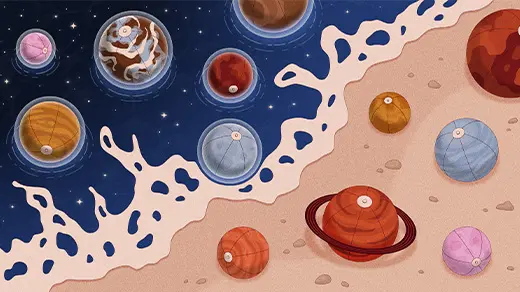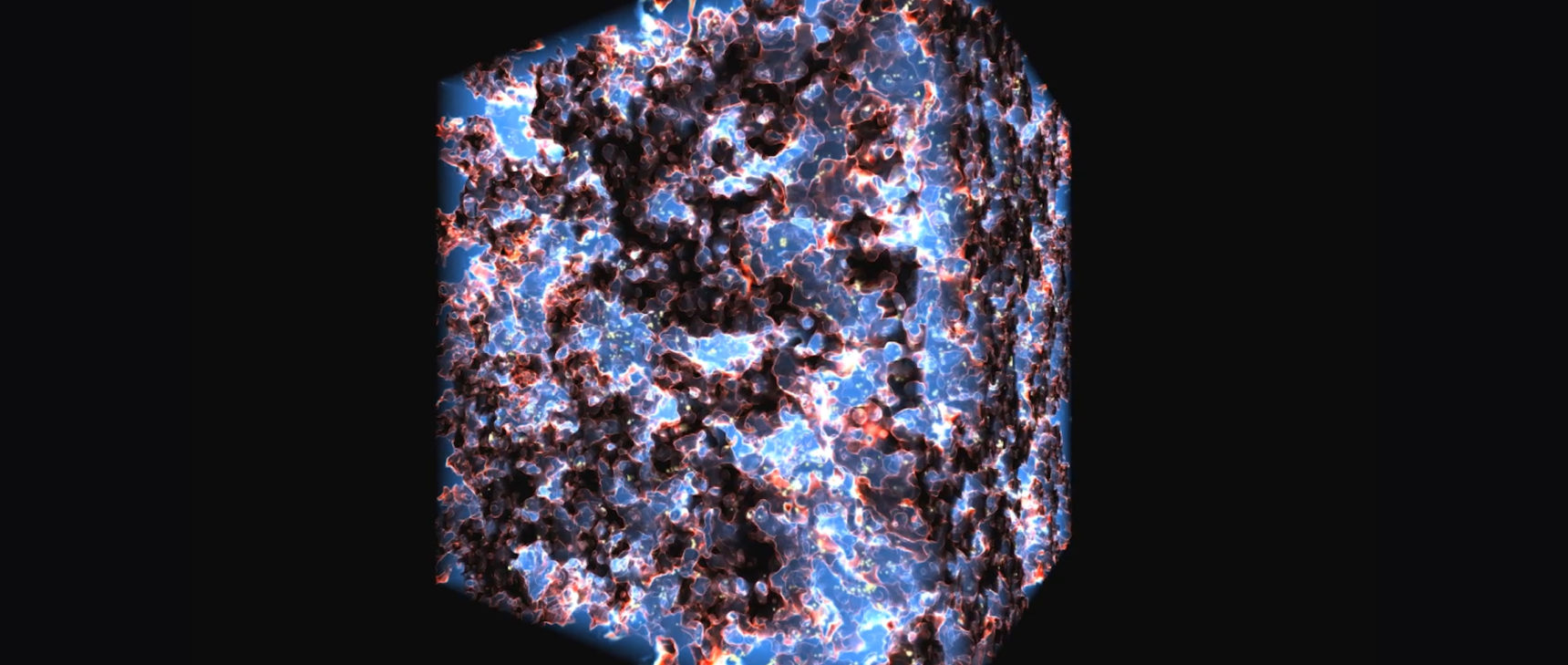The Man Making Rwanda Into a Hub for Physics
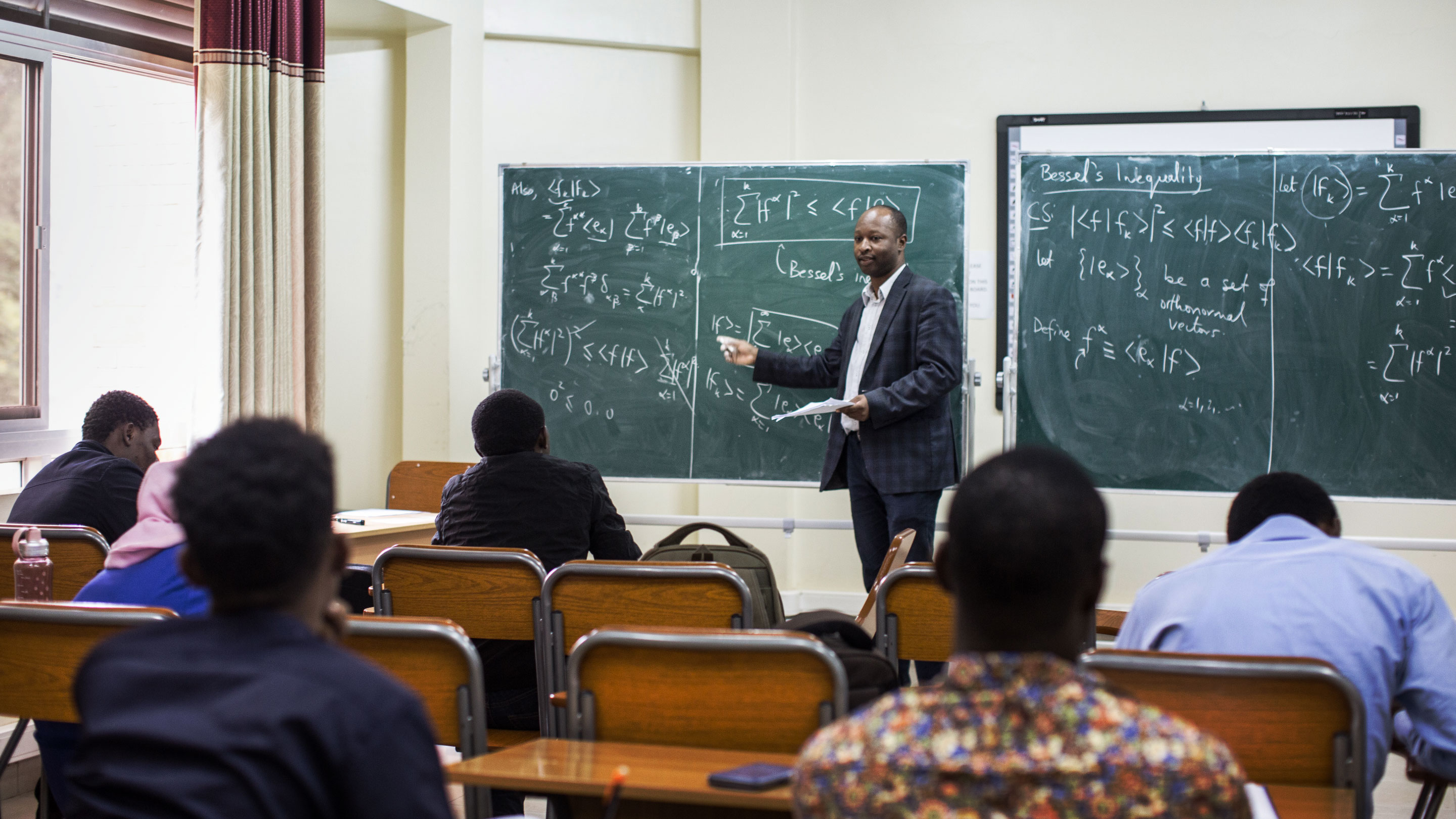
Omololu Akin-Ojo teaching a class at the East African Institute for Fundamental Research, which opened in Kigali, Rwanda, in 2018.
Jacques Nkinzingabo for Quanta Magazine
Introduction
Omololu Akin-Ojo was always reluctant to go to the United States. “I felt I could do a lot of things in Africa,” he told me in his office at the new East African Institute for Fundamental Research (EAIFR) in Kigali, Rwanda. “Unfortunately, I was wrong.”
As a university student in his home country of Nigeria in the late 1990s, Akin-Ojo learned to write computer code by hand, without ever having the chance to put the code into a computer. Aware of these limitations, his father, a physicist, encouraged him to apply to doctoral programs abroad. While studying condensed matter physics at the University of Delaware, Akin-Ojo recognized the gulf in teaching and in research opportunities between Nigeria and the U.S.
He realized then that he wanted to stem the brain drain of Africa’s brightest minds. Although he spent the next 14 years working in the U.S. and Europe, he said, “I always knew I was coming back to Africa.” He chose to specialize in theoretical physics, so that the lack of experimental equipment in Nigeria wouldn’t hinder his research when he returned.
In 2012, Akin-Ojo became an assistant professor at the African University of Science and Technology in Nigeria. Now, as the founding director of EAIFR in Rwanda, he is creating an international hub for advanced research — beginning with theoretical physics.
Opened in 2018, EAIFR is located at the University of Rwanda’s College of Science and Technology in Kigali. Once a military academy, the campus became a science- and tech-focused institution of higher learning following the 1994 genocide that tore Rwanda apart. Paul Kagame, who has ruled the country in an authoritarian manner ever since, put STEM at the center of the country’s development. The government plans to offer 90% of scholarships to students of STEM subjects by the end of the decade, and it funds EAIFR as part of this vision of a scientifically literate nation.
The institute’s polished corridors and seminar rooms are quiet, not yet broken in. The organization is still growing, with a third of its planned graduate students enrolled and half of its academic staff hired. But EAIFR already holds regular meetings and workshops and is quickly becoming a nerve center where scientists from around the world travel to meet and collaborate.
In the three hours we spoke together, physicists from Tanzania, Argentina, Australia and Iran popped into Akin-Ojo’s office, where we sat at his cluttered desk next to a map of Africa. Smartly dressed in a checked suit, Akin-Ojo spoke deliberately on subjects ranging from geopolitics to his own research, which focuses on modeling the physical properties of complex atomic structures. The conversation was part interview, part tutorial, with Akin-Ojo scribbling calculations and diagrams of quantum dots — nanoscale crystals that could be useful for solar cells and in the design of novel drugs. The interview has been condensed and edited for clarity.
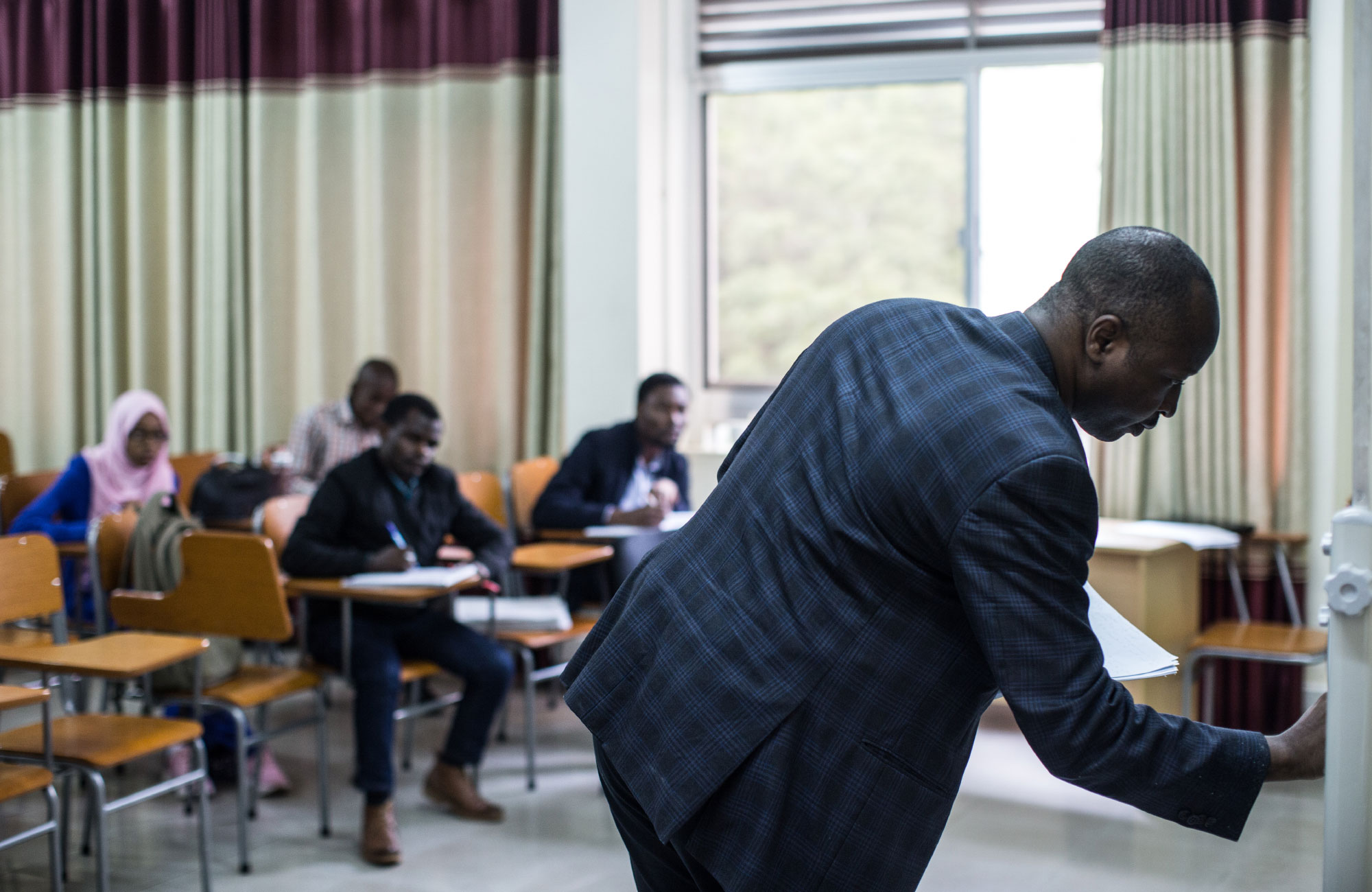
Jacques Nkinzingabo for Quanta Magazine
EAIFR has mainly hired theoretical physicists and held workshops in that area, such as on the theory of crystal defects and dark matter. Why is that?
We modelled EAIFR very much after our partner institute, the International Center for Theoretical Physics in Italy. But another thing I can say, from my past experiences working in Nigeria, is that theoretical physics is the cheapest advanced research that you can do because you don’t need equipment to get started. You just need paper, a pencil, a brain and maybe a little computer hardware. Then later on, if you get some money, you can buy an experimental gadget or add a computer cluster.
You can do theoretical physics just for the beauty and symmetry. On the other hand, theoretical physics can be applied. Many of us have come from the side where we have a technologically important problem, or a real-world problem, and we try to think of theoretical ways to attack it. In my research, I’ve been doing both.
Could you give an example?
If you look at a satellite picture of the world at night, America is bright and Europe is bright — but Africa is mostly dark. I want to change that picture, to make Africa bright. Some of the research I do can contribute toward providing cheap, clean energy and hydrogen. Almost half the world’s population still uses biomass, like wood or cow dung, for cooking. When you burn this, it’s bad for the environment and people inhale really bad stuff. But hydrogen gas produces steam when you burn it, and this has no detrimental effects.
How does this relate to theoretical physics?
To produce hydrogen gas, you split pure water into hydrogen and oxygen in the presence of a catalyst. Platinum is the best catalyst to do this, but it’s very expensive. And so you can apply the methods of theoretical physics, particularly condensed matter physics and computational chemistry, to design new, cheaper catalysts that can split water.
The water has to bind to the catalyst, but also when the reaction has occurred the products must be able to leave the catalyst. So you have to think carefully about what atoms to use and the structure of the catalyst. Designing the catalyst is purely quantum mechanics: You sit at your computer, solve the equations and do the simulations.
Do the research questions asked here at EAIFR generally have more real-world applications than at other fundamental research institutes?
At EAIFR we let scientists work on the different things that they want to work on. They’re pretty much free to do that. Right now we have somebody working on cosmology, we have someone working on high-energy physics phenomenology, there are two of us working in condensed matter physics, and we are trying to bring somebody in to work in geophysics.
Many African students are interested in solving problems that they see every day: lack of energy, lack of clean water, climate change. I tell them, maybe you can tackle it this way using some tools in theoretical physics.
Globally, does science overlook the problems that face sub-Saharan Africa?
Many times it does, but I don’t expect governments like the U.S. to put a lot of money into problems that are affecting folks in Africa. I expect the governments in Africa to put a lot of money into the problems affecting their people.
When I was in the U.S., you know everybody was talking about cancer research, so I got into working on cisplatin, an anti-cancer drug. The same tools for the work with cisplatin can be used to work with drugs related to neglected tropical diseases. Now I’ve moved back to Africa, I’m thinking of problems that face people here, problems related to antibiotic resistance or tuberculosis, for example. It’d be good if African governments realized this and funded science more. I don’t think they see it as essential unless there’s a crisis — like Ebola.
Are your students also interested in more abstract research questions?
Yes. When it comes to cosmology, the human mind has always wondered about where we came from, and what’s in the stars up there. And so it’s by compulsion, it’s just natural, to think about how these things came to be.
You see these as shared human concerns?
Exactly, and it’s exhilarating to find solutions. But studying these questions — whether in high-energy physics or in string theory — is also really important in the development of a culture of scientific thinking. We might ask: “Why is the sky blue?” And just to say, “Oh, because it’s been blue for millions of years!” No. It’s good to think critically about things. The skills you learn from critical thinking can also be applied to questions not even directly connected to science — when you’re starting a business or recognizing what is fake news.
How are you and your institute developing this culture of scientific thinking?
You know, there was a time when I was in Nigeria, and we looked for somebody from sub-Saharan Africa to teach quantum field theory [the theoretical description of interacting quantum particles]. I only found one person, and he wasn’t able to come. Imagine, in the whole of sub-Saharan Africa, you can only rely on one person to teach quantum field theory. That’s just totally nuts!
I needed to come back to help to develop this kind of research, to help to build science capacity in Africa. And with EAIFR I’m trying to do exactly this. With our students, in their first year we revamp their undergraduate degree to bring them up to a very high level. We teach them similar things that are taught in the U.S. I like that I’m able to impact the next generation of scientists, to train them to think deeply.
At EAIFR our graduate students and also lecturers from across Africa interface with people from the rest of the world. At workshops we’ve had people from Uganda, Kenya, Tanzania, Morocco, Sudan, Cameroon, Benin, Ghana, Congo, Burundi, Ethiopia. And then from the global north we’ve had people from the U.S., Belgium, France and the U.K. In our high-energy physics group, the plan is to link up with the Square Kilometer Array telescope in South Africa and Australia.
Why is Rwanda a good location for a hub like this?
I have to commend the government of Rwanda; they have this good promotion of the country. Many people want to come to Rwanda, even those that have never been to Africa before. It’s very easy for people to come and work with us here. Since 2018 Rwanda has offered a visa on arrival [to nationals of all countries]. You can just pack your bags and come.
The other thing about Rwanda is it’s very safe. When I was in Nigeria in 2014 I wanted to have a workshop. Everything was planned, then there was a bomb blast. Two weeks later, there was another bomb blast, so we had to move the workshop to South Africa.
And what about vice versa? Is it easy for African researchers to travel to the U.S. or Europe for workshops and conferences?
That one is dicey, because they have to prove that they are not going to go there and stay there. I know some people that were rejected. One of the things we hope to do with this institute is to provide a place for these meetings. So if you try to go to the U.S. or Europe and they don’t give you a visa, OK, don’t worry, we’ll bring the scientists here.
You can collaborate on the internet, but as much as science is objective, collaborating with someone is really not objective. You need to meet the person face to face and then build on that personal relationship. If I just write to a random scientist in the U.S. and say I’d really like to work with you, maybe 10% will respond.
What are the particular challenges of doing fundamental research in sub-Saharan Africa?
It’s not as easy to get journals. There’s also a huge teaching burden. Fortunately not at EAIFR, but in Africa in general, which leaves very little time for research. It would help if we had faster internet, and if we had more computing power. But also I think Africans need to think of research that we can do even with the computers that we have.
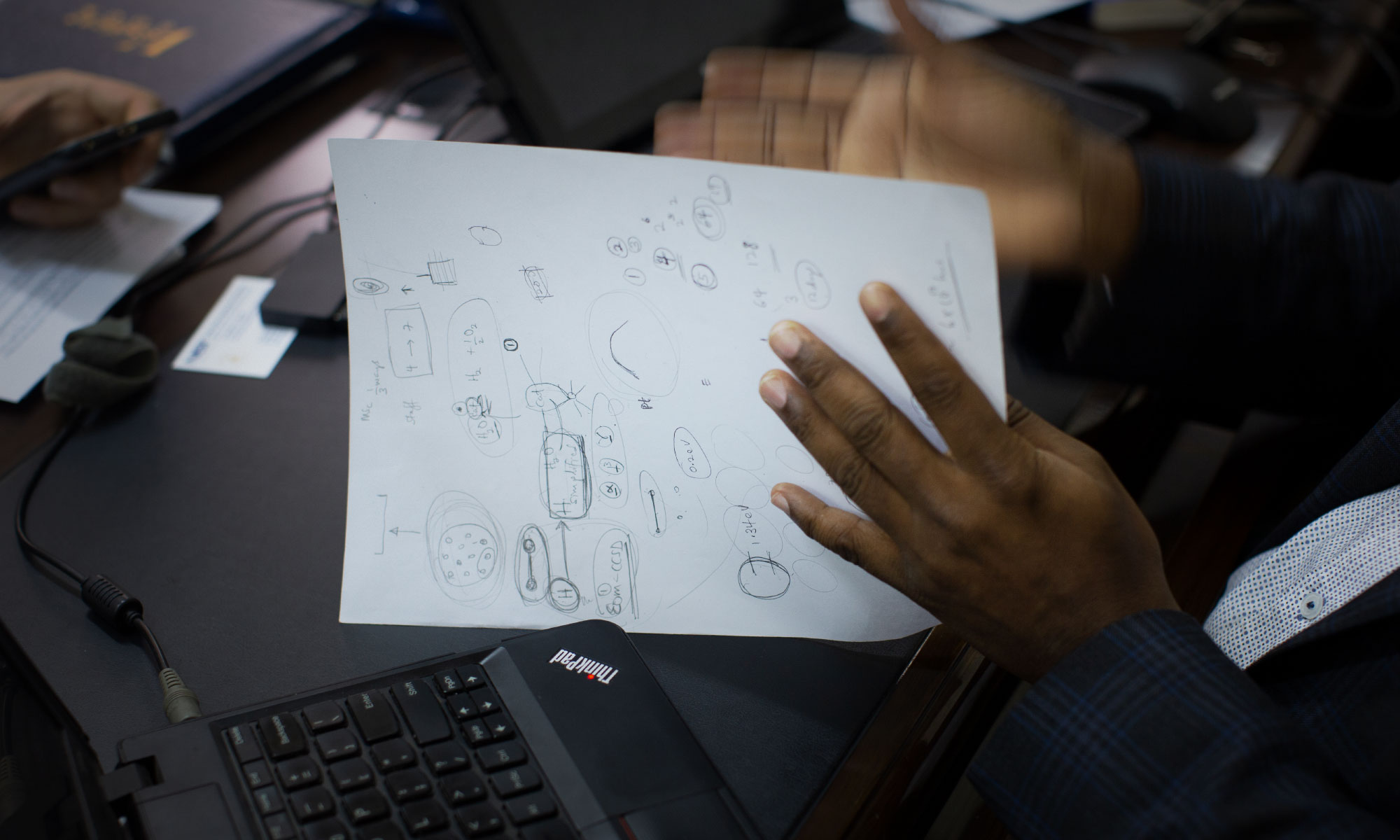
Close-up of Akin-Ojo’s notes about quantum dots, nanoscale crystals that could be useful for solar cells and in the design of novel drugs.
Jacques Nkinzingabo for Quanta Magazine
In 1929, Paul Dirac wrote that all of the equations governing chemistry, and most of physics, we already know. The only problem is that the equations are difficult to solve exactly, and so we have to think of approximate, practical ways to solve them, to get the insights we need from them without too much computation. I really like that, and this is one thing I really try to do.
In Dirac’s time, they would try to deal with three- or four-atom systems. Now people want to be able to do calculations for DNA, and for systems which can have millions of atoms. You can’t use the most accurate methods because the calculations would take longer than your lifetime. So you have to look for simpler, smarter ways to solve the problems faster. All physicists face this same problem of scaling up, but for us in Africa it’s more acute. Where there are fewer computer resources these simplified methods are doubly important.
How did you first get interested in physics growing up in Nigeria?
In Nigeria, many families want their kids to be doctors, lawyers, engineers. Well, my dad is a physicist. So each time I woke up in the morning I’d see him at his desk studying, and I would ask: “Can I be your assistant?” It was good to see someone disciplined, working that way. Then my dad had a Ph.D. student, and she was really very nice to me, and very encouraging.
You ended up going to the U.S. for graduate school. Now, as a professor in need of graduate students, are you finding it hard to keep the best students here?
Let me be honest with you, I struggle with this. I want good students to stay and work with me, but at the same time, I want my students to have a good life and to do good research with other people. So what do I do?
I don’t say: “Don’t go.” I’ll write the recommendation letter. I want what is best for the student. What I’m hoping is that in the long run, some will come back. Like I came back, right?
And do you think EAIFR is encouraging more scientists to come back or more graduate students to stay in Africa?
Not yet. We’re trying, but not yet.
African countries still have a brain-drain problem. The first step, that we’re doing now, is to have a brain circulation model. We want the brightest people that went to the developed world to come back and train people here. In 10 years, I think we’ll be like ICTP in Italy. Over time, the quality of what we do will be the same as anywhere in the world.
![Omololu Akin-Ojo in a blue checked suit sitting at his desk, framed by two laptops in the foreground.]](https://www.quantamagazine.org/wp-content/uploads/2020/03/Akin-Ojo_1920x1080_VidCover_03-1720x968.jpg)


